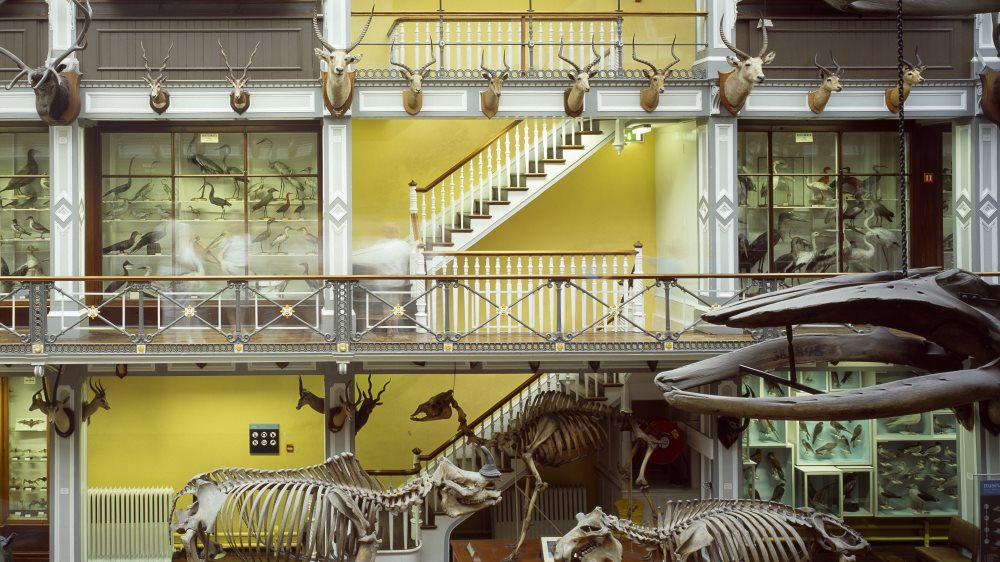
Over its 160-year sprint, the Natural History Museum has earned itself an affectionate nickname, “the Dead Zoo”, thanks to its impressive, albeit sometimes unsettling, taxidermy collection. From stuffed relics of long-lost Irish Eagles, to a real model of the extinct Tasmanian Tiger, the museum is home to thousands of stuffed and mounted wildlife exhibits.
Children visiting the museum sometimes struggle to understand how these freeze-framed animals were once living, breathing things, and, in general, people don’t tend to dwell upon the literal ins-and-outs of the taxidermy process. But “mounting” animals is a highly delicate art. “A good piece of taxidermy takes a lot of practice, patience, time and skill. I believe these objects should not be treated simply as dead animals, but as craft objects in the same way as ceramics, for example”, says Jazmine Miles-Long, whose work is soon to be on display in the museum. “It surprises me that taxidermy in museum collections is always classified as natural history and never as anthropology. Giving the pieces authorship seems to be treated as much less important than what the animal can achieve as a ‘living’ educational object.”
We might associate taxidermy with stuffy museums or antiquated princely halls, but there is a distinctly modern edge to Miles-Long’s work. Her displays are stylish, the animals full of charm and character. “I feel that all taxidermists have their own style. If I see a room of work by modern taxidermists that I know, I will be able to guess who has made which piece due to the different techniques and styles they have.” Miles-Long is not the only one ushering the craft into the 21st century, with experimental “rogue” taxidermists popping up around the globe in a movement that’s more akin to Banksy than Bad Taxidermy.
“I do get a surprised response when I say I am a taxidermist, but I think this is mostly due to my age and gender.” It’s true that a young, female vegetarian with a soft British accent is not the imagined poster child for what is often considered a dark and morbid art. And there’s no getting away from the gore of a process that invariably involves skinning, organ removal, and freeze-drying animal bodies, among other methods. The in-between stages of mounting an animal could throw even the least squeamish of us slightly off balance.
“People do find the prospect of working with dead things a bit grotesque”, says Miles-Long. “But once I talk about the work itself, and that everything I work with has died from natural causes, the feeling that the work is grotesque seems to disappear quite quickly.” Miles-Long is progressing taxidermy in more ways than one, and her online handle “Ethical Taxidermy”, refers to the fact that the animals – unlike many of the older pieces in the museum – were not killed for the purpose of display. Paradoxical though it may initially seem, many taxidermists fall into the trade out of a love for animals and a wish to preserve their natural beauty. For Miles-Long, that’s the best part of the job: “I love working with the animals themselves and getting the chance to be up close to such amazing creatures.”
To celebrate 160 years, the museum recently showcased scientists, conservationists, and artists like Miles-Long in a community open day. “The museum was opened in the 1850s, as the museum of private society, and then grew into a state museum in the 1870s”, Keeper Nigel Monaghan explains. That’s why some of the displays look a little worse for wear. Thanks to recent refurbishments, there’s no longer any ultraviolet light coming into the museum, so the taxidermy is no longer fading. Taxidermists like Miles-Long are currently breathing much-needed life back into the collection, and one of her badger creations will soon be on display for visitors to touch. As for further renovation, is it on the cards? “Absolutely”, says Monaghan. “We’ve major plans coming up in the next couple of years.”






